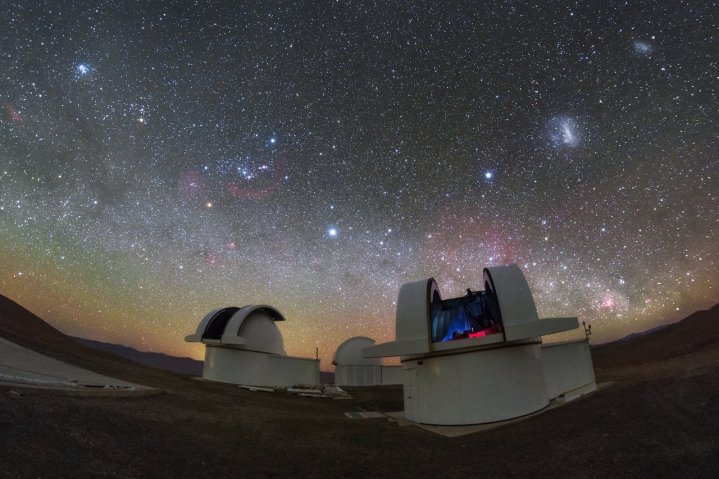
The Atacama Desert in Chile has been a hotbed of astronomical activity of late. Not only is it the site of Martian environmental simulations to test rover capabilities, it is also home to an project called SPECULOOS (Search for habitable Planets EClipsing ULtra-cOOl Stars).
SPECULOOS is part of the ESO, the European Southern Observatory, and involves the use of four robotic telescopes for planet hunting. In particular, the telescopes look near to ultracool stars and brown dwarfs to search for Earth-sized exoplanets which can then be investigated in more detail by another telescope such as ESO’s forthcoming Extremely Large Telescope (ELT).
The four telescopes of SPECULOOS are named after Jupiter’s moons: Io, Europa, Ganymede, and Callisto, and each has a one meter primary mirror with cameras that are sensitive to near-infrared wavelengths. This accords with the type of light given off by the ultracool stars and brown dwarfs which are the telescopes’ targets.
Now the Ganymede telescope has obtained its first light image, showing the beautiful spiral galaxy NGC 6902.

A “first light” is the first image taken by a telescope for scientific observation. Typically, astronomers pick a well-studied object to image so that the telescope can be tested for accuracy, and also to celebrate the launching of a new instrument.
The NGC 6902 galaxy chosen as the target of the Ganymede first light image was first discovered in 1836 by John Herschel, a renaissance man who worked in the fields of mathematics and chemistry as well as being the inventor of the blueprint and the person who originated the Julian day system still used in astronomy today. It’s a fitting tribute to Herschel’s contributions to the field that a galaxy he discovered was used in a demonstration of a brand new source of astronomical data.



